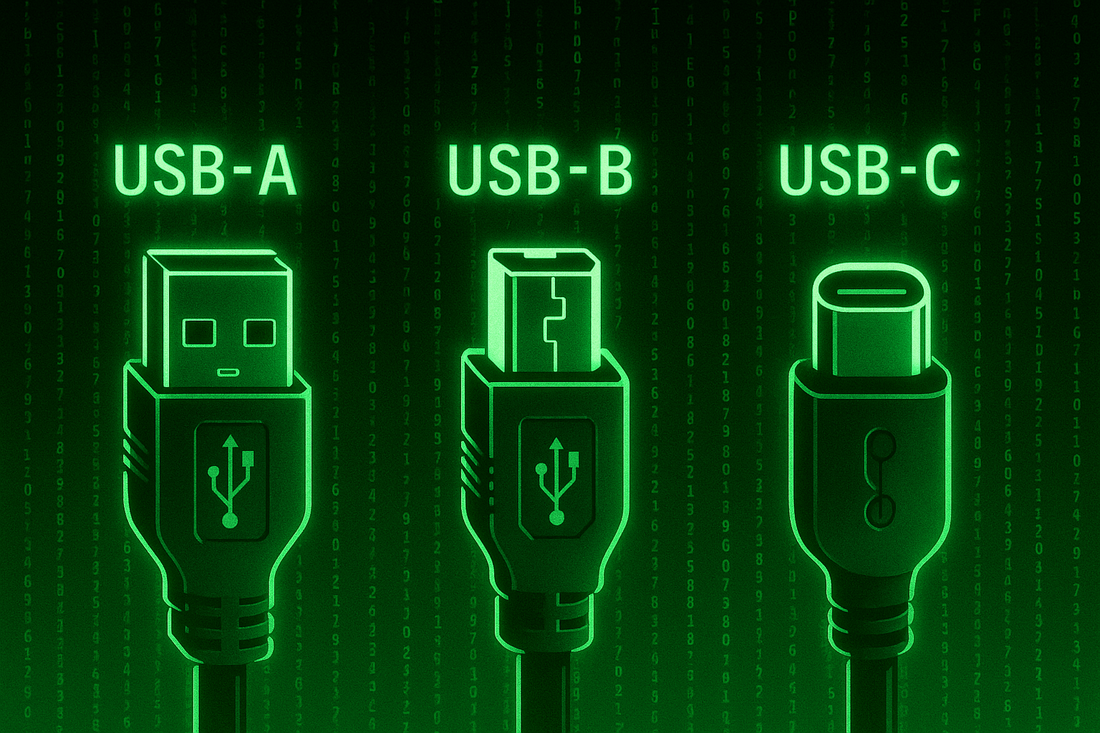
Understanding USB Connector Types: USB-A, USB-B, and USB-C
Share
When it comes to connecting modern devices, USB has become the universal standard. From charging smartphones to transmitting high-resolution video signals, the different types of USB connectors—USB-A, USB-B, and USB-C—play crucial roles. Among them, USB-C is by far the most advanced, offering high speed, versatility, and compatibility with features like DisplayPort Alternate Mode (DP Alt Mode).
In this article, we’ll explore the evolution of USB connectors, dive deep into USB-C technology.
USB-A: The Original Standard
- Shape & Use: The rectangular, flat USB-A connector is the most familiar. It has been used in computers, TVs, chargers, and gaming consoles for decades.
- Limitations: While durable, USB-A supports data and power but does not handle modern high-bandwidth video transmission. It is gradually being replaced by smaller, faster connectors.
USB-B: For Printers and Peripherals
- Shape & Use: USB-B connectors are square with beveled edges, mainly found in printers, scanners, and some audio interfaces.
- Modern Status: Rare in consumer devices today, but still present in professional audio and legacy equipment.
USB-C: The Future of Connectivity
- Shape & Design: USB-C is slim, oval, and reversible—no more guessing which side is “up.”
- Power Delivery: Supports USB Power Delivery (PD) up to 100W, making it capable of charging laptops, monitors, and more.
- Data Transfer: Depending on the version (USB 3.2, USB4), speeds reach up to 40Gbps.
- Versatility: One port can handle data, video, and power simultaneously, reducing clutter.
In fact, the European Union (EU) has mandated that all small and medium-sized electronic devices adopt USB-C as a common charging port by 2024. This regulation reinforces USB-C’s role as the universal connector standard, ensuring compatibility, reducing e-waste, and making it future-proof for global consumers.
USB-C with DP Alt Mode
One of USB-C's most powerful features is DisplayPort Alternate Mode (DP Alt Mode). This allows a USB-C port to output video signals directly to monitors, TVs, or projectors without needing a dedicated HDMI port.
For example:
- A laptop with USB-C DP Alt Mode can connect to a 4K monitor using a simple USB-C to HDMI cable.
- Smartphones with DP Alt Mode can mirror screens onto TVs, creating desktop-like experiences.
How SHERRIVA Wireless HDMI Systems Leverage USB-C
At SHERRIVA, we design wireless video solutions that fully embrace USB-C’s flexibility:
WHD-1000
- Compact USB-C transmitter with DP Alt Mode support.
- Plug directly into laptops, tablets, or phones that support USB-C video output.
- Transmits high-definition video wirelessly to your TV, monitor, or projector.
- Perfect for home entertainment, gaming, or casual business presentations.

WHD-5000
- Professional-grade 2-in-1 transmitter (USB-C & HDMI).
- Supports long-range wireless transmission (up to 100M / 328FT).
- Reliable, low-latency performance for classrooms, conferences, and live streaming.
- With USB-C DP Alt Mode, creators and professionals can connect modern laptops and phones directly—no extra adapters required.

Why USB-C with DP Alt Mode Matters for Wireless HDMI
Combining USB-C DP Alt Mode with SHERRIVA’s wireless HDMI technology unlocks new levels of freedom:
- No cables: Stream video to large screens without HDMI cords running across the room.
- Universal compatibility: Works with the latest laptops, tablets, projectors, and even smartphones.
- Professional reliability: Especially with WHD-5000, stable transmission ensures presentations and broadcasts run smoothly.
Conclusion
USB connectors have come a long way—from USB-A and USB-B for basic data transfer to USB-C with DP Alt Mode, which merges charging, data, and video into one powerful port.
For consumers and professionals alike, embracing USB-C devices ensures future-proof connectivity. And with solutions like SHERRIVA WHD-1000 and WHD-5000 Wireless HDMI Systems, you can experience the best of USB-C and DP Alt Mode—wire-free, versatile, and reliable.